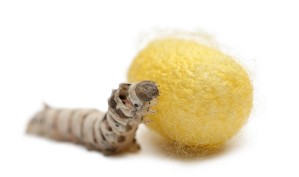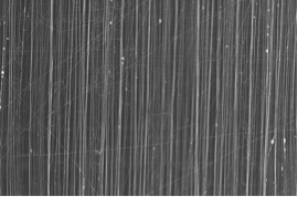Argovia Projects 2016
| PROJECT | PROJECT LEADER | COLLABORATORS | |
|---|---|---|---|
| 11.01 CerInk - Biomimetic ceramic scaffolds with density gradient and improved mechanical stability fabricated by Binder-into-Bed 3D-printing and ceramic NanoInk | Philippe Chavanne (FHNW Muttenz) | Ralf Schumacher (FHNW Muttenz), Dr. Andrea Testino (PSI), Prof. Dr. Christian Ludwig (PSI), Philipp Gruner (Medicoat AG, Mägenwil) | |
| 11.04 HPD4FED - Hybrid pixel detectors for electron diffraction of nano-samples | Prof. Dr. Jan Pieter Abrahams (University of Basel & PSI) | Dr. Tim Grüne (PSI), Prof. Dr. Henning Stahlberg (University of Basel), Dr. Bernd Schmitt (PSI), Dr. Clemens Schulze-Briese (Dectris Ltd., Baden) | |
| 11.05 IgG AptaNP - Nanoparticulate sensors for the development of cell lines for antibody production | Prof. Dr. Georg Lipps (FHNW Muttenz) | Dr. Martin Held (D-BSSE ETHZ Basel), Dr. René Pellaux (FGen GmbH, Basel) | |
| 11.10 NanoSilkTex - Development of Nanostructured Silk Fibroin-Synthetic Textile Composites | Prof. Dr. Oliver Germershaus (FHNW Muttenz) | Prof. Dr. Uwe Pieles (FHNW Muttenz), Dr. Monica Schönenberger (University of Basel), Dr. Murray Heigh t(HeiQ Materials, Bad Zurzach), Walter Bender (HeiQ Materials, Bad Zurzach) | |
| 11.12 NF-Optics - Uniaxilly Oriented Anisotropic Electrospun Nano-Fibrous Layers for Optical Applications | Dr. Martin Stalder (CSEM Muttenz) | Prof. Dr. Uwe Pieles (FHNW Muttenz), Dr. Andreas Hafner (BASF Schweiz AG, Basel) | |
11.01 CerInk – More stable implants using nano ink
2016-2017
In the Argovia project CerInk, a team of scientists from the University of Applied Sciences and Arts Northwestern Switzerland (FHNW), the Paul Scherrer Institute (PSI), and the Aargau firm Medicoat AG (Mägenwil) is researching a new method to improve the mechanical stability of bioceramic bone replacement materials. To this end, the project manager, Philippe Chavanne, and the team of scientists add a ceramic “nano ink” during an optimized 3D printing process, which increases the density of the material in the subsequent processing stages, resulting in increased stability in certain areas of the implant.
Accidents, infections or tumors often result in damage to bones, thereby necessitating the use of bone replacement materials. In numerous cases, individually tailored bone implants that are very similar to natural bone promise good chances of recovery for patients. Bioceramic implants, which can be produced individually by means of 3D printing, seem to be highly promising in this respect. They have good biocompatibility and are integrated well by the body. However, so far there have often been problems due to the poor mechanical stability of these materials.
The team of scientists from FHNW, PSI and Medicoat have already gained valuable experience in this field. In a 3D printing procedure, they combine bioceramic materials with polymers in order to imitate natural bone. In the current Argovia project they add ceramic nanoparticles (nano ink) during the printing process. In a downstream sintering process, this nano ink increases the density of the structure and therefore improves the mechanical stability.
The researchers are able to add the nano ink in different doses depending on the desired structure of the implant. This allows them to create areas with different densities within an implant. Using this method, they expect to imitate natural bone very closely and to overcome the problems of poor mechanical load-bearing capacity.
11.04 HPD4FED – New microscope supports structure determination
2016-2017
The scientists in the Argovia project HPD4FED plan to build an innovative electron microscope with a camera, which, with the aid of a new detector, will be able to measure the electron diffraction of minute amounts of natural molecules. The two project leaders, Professor Jan Pieter Abrahams from PSI and C-CINA of the University of Basel and Dr. Tim Grüne from PSI, are working on this along with other colleagues from PSI and the University of Basel, together with the company DECTRIS (Baden-Dättwil).
To analyze proteins and other large molecules in their natural environment, special methods are required which do not destroy the sensitive biomolecules and have as little impact as possible on the three-dimensional arrangement of the molecules. For this kind of study, the team led by Jan Pieter Abrahams uses high-energy electron beams that can be diffracted in a specific way depending on the arrangement of the atoms, thereby permitting conclusions regarding the structure of the sample.
The teams of scientists involved in the Argovia project HPD4FED are modifying a detector that was developed by PSI and commercialized by the company DECTRIS by investigating the use of different sensors. The optimized detector will then be integrated into an electron microscope and tested using various nano samples. By using different sensors, the participating researchers from C-CINA of the University of Basel, PSI and the company DECTRIS hope to be able to solve three-dimensional structures of the samples in atomic and molecular resolution, even when only minute amounts of the sample are analyzed.
11.05 Nanoparticular sensors – Rapid selection of the best producers
2016-2017
Another Argovia project was initiated by Professor Georg Lipps (FHNW) to improve the development of cell lines that are used to produce antibodies. Together with his project partners, Dr. Martin Held (D-BSSE, ETH Basel) and Dr. Rene Pelaux (FGen GmbH, Basel), Georg Lipps wants to develop nanoparticle sensors that can characterize cell lines with regard to their productivity in high-throughput screening procedures and help select the best producers.
Numerous antibodies are used today to treat diseases. Therapeutic antibodies, for example, bind specifically to inflammatory factors (important for treating autoimmune diseases) or to cellular receptors (cancer treatment). These antibodies are produced by mammalian cells in very complex procedures. A common major goal of research is to select the most productive cell lines and to optimize them. The project team is now devising an effective high-throughput method to be able to perform this selection rapidly using tiny sample sizes.
To do this, the researchers are developing particle sensor materials which are immobilized in nanoliter reactors (NLR). If the tested cell line produces the desired antibody in the tiny reactor, the sensors bind the antibodies. The binding process causes a change in the structure of the sensor, thereby triggering a fluorescence signal. The intensity of the fluorescence is proportional to the amount of antibody produced. A major advantage of the method studied is that no other reagents have to be added, processing steps can be omitted, and the fluorescence signal delivers conclusions about the amount of antibody produced in situ. This means that the scientists are able to select the best producers in a short time and then further optimize them.
11.10 NanoSilkTex – Combining positive characteristics
2016-2017
In the Argovia project NanoSilkTex, Professor Oliver Germershaus and Professor Uwe Pieles (both of the FHNW School of Life Sciences) are working with Dr Monica Schönenberger (Nano Imaging Lab, SNI) and Dr Murray Height (HeiQ Materials, Bad Zurzach) to combine the positive characteristics of silk with those of synthetic textiles.
For thousands of years, people have been using the silk threads of the silkworm (Bombyx mori) to produce fabrics. Silk’s fine sheen, its immense strength, the superb insulation it provides against heat and cold along with its good water absorbency are among the qualities that have made it so popular. However, silk production is very laborious and expensive. Silk also lacks the functional versatility exhibited by modern synthetic fabrics. For this reason, the SNI researchers involved in the Argovia project NanoSilkTex are looking to improve synthetic fibers by adding silk proteins. To do so, they will extract the main constituent of the silk cocoon (silk fibroin), produce a protein solution from it and use that to coat synthetic fibers.
Previous results demonstrate that it is necessary to add a “glue” to bind the fibroin permanently to the synthetic fibers. When the fibroin coating is applied at a particular thickness, it imparts some of the positive characteristics of silk, such as increased water absorbency, resistance to UV rays and an improved feel, to the synthetic material. Now the process is being optimized further, in terms of the nanostructure of the layer that is applied. Novel approaches to the functionalization of the coating are also being tested.
The research team for the NanoSilkTex project consists of experts from a variety of fields. Specialists from HeiQ Materials are contributing their expertise in finishing textiles. Oliver Germershaus’s laboratory has the know-how required for production and characterization of silk fibroin. Uwe Pieles and his team are experts in the field of materials testing and Monica Schönenberger can provide analyses of the surface at the nanoscale.
11.12 NF-Optics – Vacuum-free method of producing optical coatings
2016-2017
In the Argovia project NF-Optics, scientists are working on a brand-new method of producing optical coatings without the need for a vacuum. The research team consists of the project head, Dr Martin Stalder, and Dr R. Ferrini’s team from CSEM SA, as well as groups led by Professor Uwe Pieles (FHNW) and Dr Andreas Hafner (BASF Schweiz AG, Basel).
In optical devices, thin coatings are used to produce different optical effects. For example, they can act as an interference filter or an anti-reflective coating, or they can be used to split a light beam. The production of these coatings, which are only a few nanometers thick, usually takes place in cleanrooms with vacuum systems, so it is very resource-intensive. If there were a method for doing this under normal pressure conditions, it would bring down production costs, save energy and allow a greater range of materials to be used.
The team involved in Argovia project NF-Optics is now looking at whether electrospinning is suited to producing precisely oriented nanofibers that can be applied to glass or thin films and then used as optical coatings. The coatings produced in this way will be compared with traditional optical components to determine their quality. The electrospinning method is best known for the production of non-woven textiles, which are used in filters or to dress wounds, for example.
As the illustration shows, the scientists have already managed to produce nanofiber coatings with the high degree of orientation required for the optical components they are planning.


